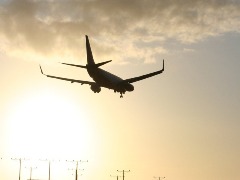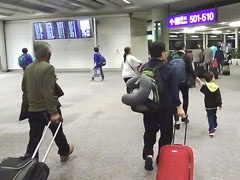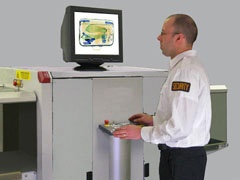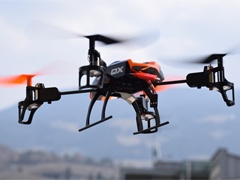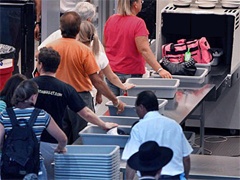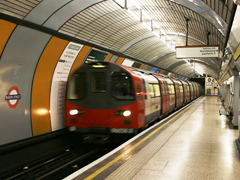Aviation is a complex industry that is constantly growing. According to IATA, over 3.7 billion passengers will fly this year. In a day, approximately 100,000 total flights take place and more than 16 billion USD worth of goods travel by air.
The global aviation industry is heavily relied upon by many and the demand for air travel will only grow. In fact, experts predict it will double over the next 20 years. That’s why security has and will always remain a top priority for those in aviation. So what types of challenges related to security does the industry face today?
Read More
Topics:
Aviation Security,
Trends,
Cargo Security,
Security Threats,
Transportation,
Current Events
Presently, passenger screening is controlled by the individual airports conducting it - each responsible for the security of their facility and the passengers moving through. Unfortunately, not all airports have the same level of security. Some fall under par while others go above and beyond.
Because of this inconsistency, a very early concept has been thrown around the industry. This concept asks us to take a look at security screening through a hub and spoke perspective. Roughly, this means sending passenger aircrafts to airports with established security controls for screening before heading to their final destination. Could this idea work or would it make situations even more complicated?
Read More
Topics:
Aviation Security,
Trends,
Transportation
No one can deny that technology has evolved immensely in a short amount of time. Today’s technologies allow us to do things that weren’t possible years ago. 3D printers, encrypted phones, and drones are examples of how technology has advanced.
Despite the best intentions, there will still be those who will use new technology with bad intentions. Because technology is widespread and readily available for global consumption, it is often difficult to control who uses it. So when powerful technology gets in the wrong hands, it could spell disaster.
Read More
Topics:
Trends,
General Security,
Security Threats
We’ve said it before and we’ll say it again – Today’s X-ray systems are currently in their most stable form and they’ll be around for quite some time. The screening technology is reliable and has proven to be effective when used by trained X-ray operators for threat detection. Currently, there is no technology existing in the market to replace conventional X-ray in terms of cost and speed.
Manufacturers have even started to develop 3D imaging technology to integrate into their systems – thus extending the life of conventional X-ray further. This technology brings flat 2D X-ray images to life by giving them depth while providing a comprehensive overview of screened baggage and cargo for 3D image interpretation.
Read More
Topics:
Aviation Security,
Trends,
Cargo Security
The recent upswing in terrorist activities is troubling. Terrorists have gotten smarter and more tactical with how they carry out their attacks. Although they haven’t stopped targeting the air industry as evidenced with the recent bombing of Metrojet Flight 9268 over Egypt, they have shifted toward more ground attacks.
Clearly, these attacks on places of worship, markets, cafes, hotels, and stadiums are becoming more common than we would like. Because of this, there are concerns of security especially in countries with open borders. This has some people asking whether Europe’s open border policy is making it easier for terrorists and criminals to do business. If so, would it be wise for Europe to bring back its internal borders?
Read More
Topics:
Trends,
General Security,
Ports & Borders,
Critical Infrastructure,
Security Threats,
Current Events
Currently, X-ray systems are in their most stable form. They have become a proven security screening technology and are used in many markets around the world including transportation, critical infrastructure, and ports & borders.
Until X-ray equipment manufacturers invent a groundbreaking way to revolutionize the X-ray machine and push it to the next level, today’s X-ray systems will continue to dominate the security screening industry.
Read More
Topics:
Security Training,
Trends,
General Security,
Ports & Borders,
Critical Infrastructure,
Transportation
We are about two-thirds into 2015 and thought it would be interesting to follow-up on a blog post published at the beginning of this year: Aviation Industry Trends, Predictions & Advice for 2015. The original blog post written by our President, Michael Rooksby, listed some aviation industry trends, predictions, and advice for 2015 as given by experts in the industry.
This week, I sat down with Michael to discuss how the expert predictions were panning out so far and to get a better understanding of his own thoughts and insights into the aviation industry. Here’s the dialogue from our Question and Answer session:
Read More
Topics:
Security Training,
Aviation Security,
Trends,
Transportation
Unmanned aircraft systems (UAS) and unmanned aerial vehicles (UAV), commonly referred to as drones, are increasingly gaining attention. Military use of drones has already been in operation for years. Regulations for commercial use of drones are currently being pushed by businesses. Recreational use of drones is on the rise among consumers.
It may be a sensitive topic, but these drones all share airspace with other military and civil aircrafts. Yet, no firm regulations and enforcement of regulations exist on a global scale for the aviation industry.
Read More
Topics:
Aviation Security,
Trends,
Current Events
Airline passengers arrive at the airport. They check their bags, get their boarding passes, and head towards the security checkpoint. At the sight of long lines, some travelers gripe. Others have grown accustom to the long lines and see it as a regular part of the airport routine to keep civil aviation secure.
Industry discussions about the future of aviation security checkpoints seek to improve the screening process. Using risk-based security principles, the goal is to offer the same level of security, but with less invasive screening processes and more connected technology systems to make the traveler experience easier.
Read More
Topics:
Aviation Security,
Trends,
Current Events
In the past few decades, terrorist tactics have changed. Whether or not you were aware, targets of terrorist organizations and lone wolf radicals have shifted.
Previous attacks and attempts had been aimed at airlines carrying cargo and passengers. Lately though, targets have veered in a different direction – towards mass transit and critical infrastructure.
That’s not to say they’ve stopped targeting airlines altogether. We know terrorists are always looking for ways to exploit vulnerabilities.
Read More
Topics:
Aviation Security,
Trends,
Cargo Security,
Critical Infrastructure,
Security Threats

